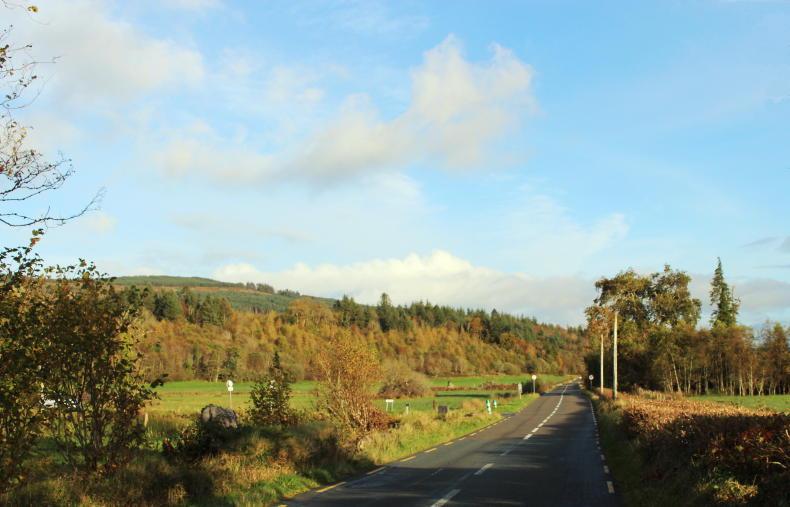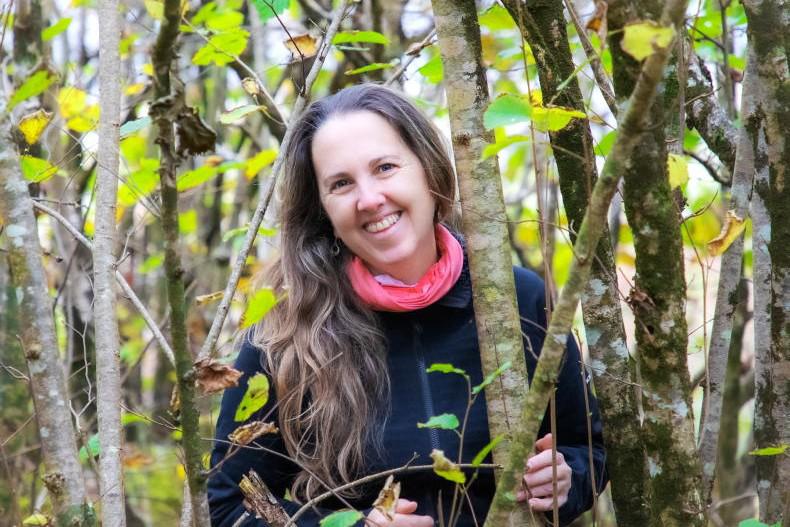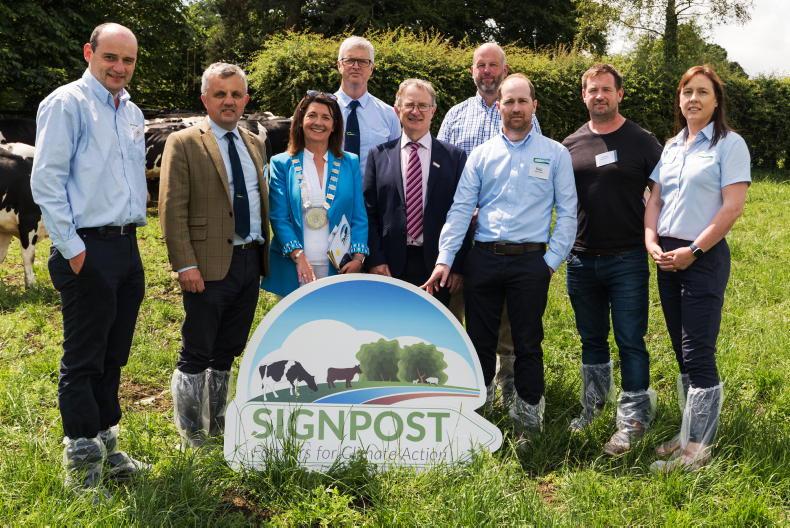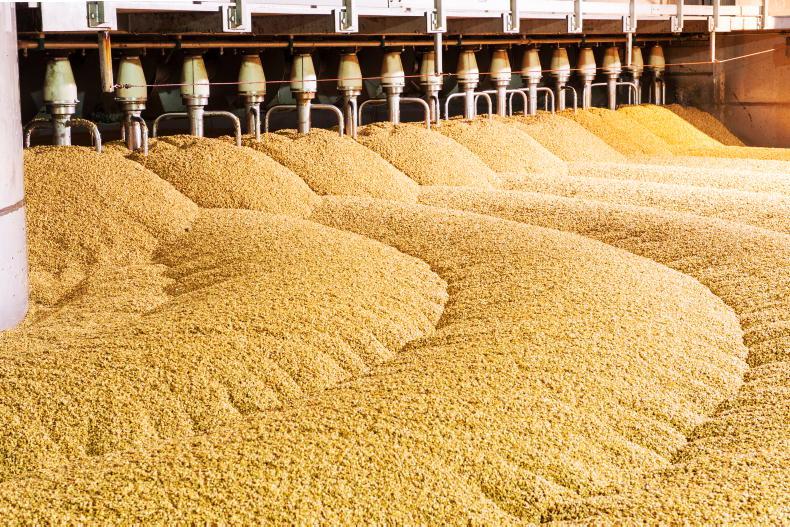At the recent Augustine Henry Zoominar lecture, Dr David Styles outlined a number of afforestation scenarios – by area –to assist Ireland in achieving carbon neutrality.
His presentation examined a range of carbon storage scenarios including terrestrial carbon sequestration (stored in trees), avoided livestock emissions and carbon storage in harvested wood products (HWP), and the role of wood in the circular economy.
When asked what is Ireland’s best afforestation scenario in achieving net zero, he said: “Ideally, 30,000ha of new forests per year but a minimum of 20,000ha, with at least 50% commercial forestry – from 2025 to 2050 – would give a reasonable chance of achieving climate neutrality. This would need to be combined with an ambitious land rewetting programme of most drained organic soils and exploited peat bogs as well as driving down agricultural emissions by 50% by 2050.”
Dr Styles, who is senior lecturer in agri sustainability at NUI Galway, based his findings on two research papers which he has co-authored: “Harnessing the forest carbon life cycle for climate neutrality” and “Commercial afforestation can deliver effective climate change mitigation under multiple decarbonisation pathways”.
While conservation forestry is needed to deliver a wide range of ecosystem services and restore natural capital, it provides a finite – albeit useful – carbon sink
He favours commercial coniferous forestry over conservation or native species in terms of climate change mitigation but he sees a role for both.
“While conservation forestry is needed to deliver a wide range of ecosystem services and restore natural capital, it provides a finite – albeit useful – carbon sink,” he says.
“Commercial forestry can offer a faster and, ultimately, much longer carbon sink if we are smart in our future use of wood. Commercial forestry coupled with use of wood in construction, advanced materials and bioenergy – with carbon capture technology in future – offers the most efficient and realistic pathway to achieve such removals, while supporting economic activity via cascading uses of wood in line with circular economy principles.”
When asked how important this circular approach is in convincing decision makers to opt for a strong commercial coniferous afforestation programme, he said: “Fully accounting for downstream use of wood is absolutely essential to understand the full climate mitigation potential of forestry.”
Findings in his research paper “Commercial afforestation can deliver effective climate change mitigation under multiple decarbonisation pathways” showed “that almost two-thirds of the climate mitigation delivered by new commercial forests over two harvest cycles – 100 years – could arise through HWP carbon storage, substitution of GHG-intensive materials including masonry blocks, and substitution of fossil fuels” assuming a cascading use of wood programme is in place.

Dr David Styles.
“The overall mitigation delivered by commercial forests proved remarkably resilient to different wood uses, even if future deployment of carbon capture technology is unsuccessful,” maintains Dr Styles.
“Crucially, fast-growing commercial forestry can provide twice the climate mitigation of mixed conservation forests, and four times the net mitigation of semi-natural forests, over a 100-year time horizon. And in the unlikely event we don’t need to use wood for construction, advanced materials and bioenergy in the future, trees can be left in the ground as a valuable store of carbon. So, planting commercial forestry now will give future generations a wide range of options to sustain a low-carbon, circular economy of different hues.”
Annual planting
A sustained annual planting rate of 20,000ha would represent a dramatic and unprecedented change in Irish forestry and agriculture, which he acknowledges.
He is conscious of the impact of an annual afforestation of this magnitude and says that “farmers need to benefit from carbon payments to incentivise them to plant” and to remove the threat of EU fines if we don’t achieve net zero.
Fast-growing commercial forestry can provide twice the climate mitigation of mixed conservation forests, and four times the net mitigation of semi-natural forests over 100 years
“Ireland is way off target to meet EU Emission Sharing Regulation targets,” he claims.
“As far as I understand, only two mechanisms are available to make up a target shortfall: buying EU Emission Trading System (ETS) carbon permits, currently at €80/t CO2; and/or buying ‘over compliance’ credits from other member states.”
He said these prices/costs are considerably higher than voluntary carbon credits which largely originate from developing countries.
“As companies and governments scramble to meet net zero targets, the price of carbon credits, even from voluntary markets, is likely to be driven up dramatically,” he says.
“Costs of up to €250/t off CO2 are being used in medium-term policy projections. At this rate, for every 4m t CO2 Ireland exceeds its emission targets, compensatory carbon credit costs could amount to €1bn annually. Of course, these prices will drive afforestation in future, but then it will be too late to avoid decades of fines as the forests are planted and grow in order for carbon credits to be counted.”
Continuous cover forestry field day in Co Wicklow
Cloragh forest, outside Ashford, Co Wicklow, is the venue for Pro Silva Ireland’s annual continuous cover forestry (CCF) spring field day this Saturday (23 April).
Owned by Lucy Tottenham and managed by current Pro Silva Ireland chair Liam Byrne, Cloragh contains a wide range of stand types, including native oak woodland in the Devils Glen Natural Heritage Area and commercially managed conifers including Douglas fir and spruce, all managed, according to CCF principles over the past 17 years.
The field day begins at 10.30am and lasts until 4pm. There will be a transfer from the meeting point (Eircode A67PO38) which is signposted from Ashford village. Participants should bring a packed lunch and suitable clothing and footwear.
Teagasc pine weevil conference in Tullamore
Teagasc is organising a conference on 4 May (10.30am to 3pm) in the Tullamore Court Hotel, focusing on integrated pest management of pine weevil in reforestation sites in association with Maynooth University.
Supported by the Department of Agriculture, Food and the Marine, the conference will feature presentations by experts from Teagasc, Maynooth University, and Coillte along with speakers from the private forestry sector from Ireland and the UK.
Topics include lifecycle and management options of the large pine weevil, pesticide regulations, control on reforestation sites and continuous cover forestry.
The conference is free but attendees must register (www.teagasc.ie/pineweevilconf) by 3 May.
At the recent Augustine Henry Zoominar lecture, Dr David Styles outlined a number of afforestation scenarios – by area –to assist Ireland in achieving carbon neutrality.
His presentation examined a range of carbon storage scenarios including terrestrial carbon sequestration (stored in trees), avoided livestock emissions and carbon storage in harvested wood products (HWP), and the role of wood in the circular economy.
When asked what is Ireland’s best afforestation scenario in achieving net zero, he said: “Ideally, 30,000ha of new forests per year but a minimum of 20,000ha, with at least 50% commercial forestry – from 2025 to 2050 – would give a reasonable chance of achieving climate neutrality. This would need to be combined with an ambitious land rewetting programme of most drained organic soils and exploited peat bogs as well as driving down agricultural emissions by 50% by 2050.”
Dr Styles, who is senior lecturer in agri sustainability at NUI Galway, based his findings on two research papers which he has co-authored: “Harnessing the forest carbon life cycle for climate neutrality” and “Commercial afforestation can deliver effective climate change mitigation under multiple decarbonisation pathways”.
While conservation forestry is needed to deliver a wide range of ecosystem services and restore natural capital, it provides a finite – albeit useful – carbon sink
He favours commercial coniferous forestry over conservation or native species in terms of climate change mitigation but he sees a role for both.
“While conservation forestry is needed to deliver a wide range of ecosystem services and restore natural capital, it provides a finite – albeit useful – carbon sink,” he says.
“Commercial forestry can offer a faster and, ultimately, much longer carbon sink if we are smart in our future use of wood. Commercial forestry coupled with use of wood in construction, advanced materials and bioenergy – with carbon capture technology in future – offers the most efficient and realistic pathway to achieve such removals, while supporting economic activity via cascading uses of wood in line with circular economy principles.”
When asked how important this circular approach is in convincing decision makers to opt for a strong commercial coniferous afforestation programme, he said: “Fully accounting for downstream use of wood is absolutely essential to understand the full climate mitigation potential of forestry.”
Findings in his research paper “Commercial afforestation can deliver effective climate change mitigation under multiple decarbonisation pathways” showed “that almost two-thirds of the climate mitigation delivered by new commercial forests over two harvest cycles – 100 years – could arise through HWP carbon storage, substitution of GHG-intensive materials including masonry blocks, and substitution of fossil fuels” assuming a cascading use of wood programme is in place.

Dr David Styles.
“The overall mitigation delivered by commercial forests proved remarkably resilient to different wood uses, even if future deployment of carbon capture technology is unsuccessful,” maintains Dr Styles.
“Crucially, fast-growing commercial forestry can provide twice the climate mitigation of mixed conservation forests, and four times the net mitigation of semi-natural forests, over a 100-year time horizon. And in the unlikely event we don’t need to use wood for construction, advanced materials and bioenergy in the future, trees can be left in the ground as a valuable store of carbon. So, planting commercial forestry now will give future generations a wide range of options to sustain a low-carbon, circular economy of different hues.”
Annual planting
A sustained annual planting rate of 20,000ha would represent a dramatic and unprecedented change in Irish forestry and agriculture, which he acknowledges.
He is conscious of the impact of an annual afforestation of this magnitude and says that “farmers need to benefit from carbon payments to incentivise them to plant” and to remove the threat of EU fines if we don’t achieve net zero.
Fast-growing commercial forestry can provide twice the climate mitigation of mixed conservation forests, and four times the net mitigation of semi-natural forests over 100 years
“Ireland is way off target to meet EU Emission Sharing Regulation targets,” he claims.
“As far as I understand, only two mechanisms are available to make up a target shortfall: buying EU Emission Trading System (ETS) carbon permits, currently at €80/t CO2; and/or buying ‘over compliance’ credits from other member states.”
He said these prices/costs are considerably higher than voluntary carbon credits which largely originate from developing countries.
“As companies and governments scramble to meet net zero targets, the price of carbon credits, even from voluntary markets, is likely to be driven up dramatically,” he says.
“Costs of up to €250/t off CO2 are being used in medium-term policy projections. At this rate, for every 4m t CO2 Ireland exceeds its emission targets, compensatory carbon credit costs could amount to €1bn annually. Of course, these prices will drive afforestation in future, but then it will be too late to avoid decades of fines as the forests are planted and grow in order for carbon credits to be counted.”
Continuous cover forestry field day in Co Wicklow
Cloragh forest, outside Ashford, Co Wicklow, is the venue for Pro Silva Ireland’s annual continuous cover forestry (CCF) spring field day this Saturday (23 April).
Owned by Lucy Tottenham and managed by current Pro Silva Ireland chair Liam Byrne, Cloragh contains a wide range of stand types, including native oak woodland in the Devils Glen Natural Heritage Area and commercially managed conifers including Douglas fir and spruce, all managed, according to CCF principles over the past 17 years.
The field day begins at 10.30am and lasts until 4pm. There will be a transfer from the meeting point (Eircode A67PO38) which is signposted from Ashford village. Participants should bring a packed lunch and suitable clothing and footwear.
Teagasc pine weevil conference in Tullamore
Teagasc is organising a conference on 4 May (10.30am to 3pm) in the Tullamore Court Hotel, focusing on integrated pest management of pine weevil in reforestation sites in association with Maynooth University.
Supported by the Department of Agriculture, Food and the Marine, the conference will feature presentations by experts from Teagasc, Maynooth University, and Coillte along with speakers from the private forestry sector from Ireland and the UK.
Topics include lifecycle and management options of the large pine weevil, pesticide regulations, control on reforestation sites and continuous cover forestry.
The conference is free but attendees must register (www.teagasc.ie/pineweevilconf) by 3 May.










SHARING OPTIONS